Priam’s Treasure – Authentic Trove From Homeric Troy Or Deception?
Jan Bartek - AncientPages.com - The ancient mystery of Priam's Treasure remains unsolved. Anyone who appreciates magnificent ancient treasures will be fascinated with the famous Trojan hoard, but are the artifacts authentic?
Some of the Priam treasures - earrings, vase and a big diadem. Credit: sailko - CC BY-SA 3.0 - Finoskov - CC BY-SA 4.0 - NearEMPTiness - CC BY-SA 4.0
This magnificent find remains the largest and most controversial ever made at Troy, and experts are still debating whether Priam's Treasure is genuine.
Between 1871 and 1873, archaeologist Heinrich Schliemann excavated at the ancient site of Troy in modern-day Turkey. He unearthed ruins of ancient cities that he declared the city of Troy, mentioned in the Iliad, an ancient Greek epic poem attributed to Homer.
The 4,000-year-old ancient city of Troy is nowadays one of the most famous archaeological sites in the world.
Located in what today is known as Anatolia in modern Turkey, the ancient city of Troy was the setting of the Greco-Trojan War that is the subject of Homer's epic legendary poem The Iliad. However, whether the Trojan War occurred at this spot and whether the site in northwest Turkey is the same as Troy is debatable.
Excited to have found ancient ruins, Schliemann continued digging despite not having permission from the Ottoman government or the landowner. Then, he suddenly announced he had discovered a magnificent trove of beautiful gold, silver, and copper objects. Among them were bracelets, goblets, daggers, shields, and vases, to mention a few.
In his archaeological report, Schielmann stated: "In excavating this wall further and directly by the side of the palace of King Priam, I came upon a large copper article of the most remarkable form, which attracted my attention all the more as I thought I saw gold behind it. …
In order to withdraw the treasure from the greed of my workmen, and to save it for archaeology, … I immediately had lunch break called.
While the men were eating and resting, I cut out the Treasure with a large knife.
Part of Priam's treasure. Credit: Public Domain
It would, however, have been impossible for me to have removed the treasure without the help of my dear wife, who stood by me ready to pack the things which I cut out in her shawl and to carry them away."
He called the unearthed artifacts Priam's Treasure and smuggled the discovered artifacts out of Anatolia.
Schliemann got in real trouble when the Ottoman government learned his wife Sophie had carried one of the jewels, showing the public her husband's archaeological discovery. The Ottoman government revoked Schliemann's permission to dig and sued him for its share of the gold. But Schliemann, who had previously been a businessman, found a way to save his archaeological carrier. He offered the Ottoman government some of the Priam's treasures in exchange for permission to continue excavations at Troy.
There are several reasons why modern scientists question the authenticity of Schliemann's trove.
According to experts, "Priam's Treasure has come under suspicion partly because Schliemann's initial account of the discovery, in his diary, is rather sketchy. It is suggested that at the time it was written, the treasure was not yet complete." 1
Active Emeritus of Classics David Traill at UC Davis, has thoroughly investigated Schliemann's discovery of the trove and calls it a fraud.
Schliemann's wife Sophie wearing the Priam jewels. Credit: Jean-Pierre Dalbéra - CC BY 2.0
Traill says "that it was not a single find as Schliemann represents, but an artificial collection put together from several different sources. The collection formed around a group of bronzes (not identified exactly, but presumably including some of the spearhead, daggers, and falt axes) which was genuinely found on the site of Troy near the end of the 1873 season, but whose precise findspot and date of discovery Schliemann falsified.
To this were added more valuable items which Schliemann had been setting aside from his excavations for just such purpose over a period of months "or even years." 2
Many researchers still wonder whether Schliemann falsified his discoveries. A study of his background reveals that "Schliemann is known to have been less than completely honest. Schliemann started out as a businessman, and Professors William Calder and David Traill have established that, for example, a banking operation which he ran in California in 1851 was almost certainly shady.; that he lied to secure his U.S. citizenship and divorce in 1868; and that in his publications he exaggerated the degree to which the excavation of Troy had been his life ambition. They conclude that he was a liar." 1
After being lost for a long time, the Priam artifacts are spread across multiple museums today. Some objects are kept at the Pushkin Museum in Moscow, Russia, while the rest can be seen at the Neues Museum in Berlin, Germany, and Istanbul Archaeology Museum, Istanbul, Turkey.
Scholars will undoubtedly keep debating the authenticity of these ancient treasures for a long. Still, those who want to admire ancient art can visit the mentioned museums and see the objects that have caused such controversy among academics.
Written by Jan Bartek - AncientPages.com Staff Writer
Updated on January 17, 2024
Copyright © AncientPages.com All rights reserved. This material may not be published, broadcast, rewritten or redistributed in whole or part without the express written permission of AncientPages.com
Expand for references- Easton, D. F. "Heinrich Schliemann: Hero or Fraud?" The Classical World91, no. 5 (1998): 335-43.
- Easton, D. F. "Priam's Treasure." Anatolian Studies34 (1984): 141-69.
- David A. Traill - Schliemann of Troy: Treasure and Deceit
More From Ancient Pages
-
 Afterlife: Ancient Egyptian Mummification Balms Studied
Archaeology | Aug 31, 2023
Afterlife: Ancient Egyptian Mummification Balms Studied
Archaeology | Aug 31, 2023 -
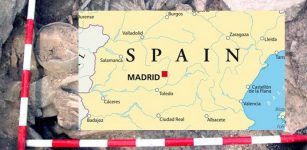 Ancient DNA Reveals: Iberian Males Were Almost Completely Replaced Between 4,500 And 4,000 Years Ago
Archaeology | Mar 15, 2019
Ancient DNA Reveals: Iberian Males Were Almost Completely Replaced Between 4,500 And 4,000 Years Ago
Archaeology | Mar 15, 2019 -
 On This Day In History: Jukebox Installed For The First Time In San Francisco – On Nov 23, 1889
News | Nov 23, 2016
On This Day In History: Jukebox Installed For The First Time In San Francisco – On Nov 23, 1889
News | Nov 23, 2016 -
 On This Day In History: Battle of Champion Hill Was Crucial Action Of Grant’s Vicksburg Campaign – On May 16, 1863
News | May 16, 2016
On This Day In History: Battle of Champion Hill Was Crucial Action Of Grant’s Vicksburg Campaign – On May 16, 1863
News | May 16, 2016 -
 Could Vancouver Island’s Hepburn Stone Be 15,000 Years Old?
Artifacts | Feb 20, 2021
Could Vancouver Island’s Hepburn Stone Be 15,000 Years Old?
Artifacts | Feb 20, 2021 -
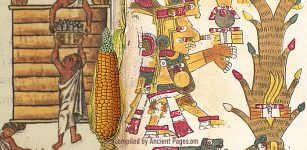 Centeotl: Lord Of Maize Who Was Revered Before The Olmecs By All Mesoamerica’s Inhabitants
Featured Stories | Feb 20, 2024
Centeotl: Lord Of Maize Who Was Revered Before The Olmecs By All Mesoamerica’s Inhabitants
Featured Stories | Feb 20, 2024 -
 Unique 1800-Year-Old Roman Coin Unearthed On Southern Carmel
Artifacts | Mar 1, 2021
Unique 1800-Year-Old Roman Coin Unearthed On Southern Carmel
Artifacts | Mar 1, 2021 -
 Sirens: The Secret Of The Power In Their Captivating Song That Heralded Death
Featured Stories | Jul 9, 2023
Sirens: The Secret Of The Power In Their Captivating Song That Heralded Death
Featured Stories | Jul 9, 2023 -
 Two-Million-Year-Old DNA Opens A ‘Game-Changing’ New Chapter In The History Of Evolution
Archaeology | Dec 7, 2022
Two-Million-Year-Old DNA Opens A ‘Game-Changing’ New Chapter In The History Of Evolution
Archaeology | Dec 7, 2022 -
 Inca Communication: Mailmen Of The Inca Empire Were Fast Roadrunners
Ancient History Facts | Mar 20, 2016
Inca Communication: Mailmen Of The Inca Empire Were Fast Roadrunners
Ancient History Facts | Mar 20, 2016 -
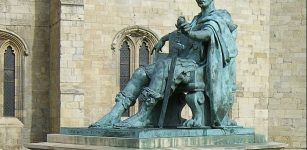 On This Day In History: Edict Of Milan Is Signed – Persecution Of Christians Ends – June 13, 313 AD
News | Jun 13, 2016
On This Day In History: Edict Of Milan Is Signed – Persecution Of Christians Ends – June 13, 313 AD
News | Jun 13, 2016 -
 Evidence For A Divergence Between Eastern And Western Mediterranean Indo-European Languages Finally Provided By Ancient Genomics Study
Archaeology | Jan 4, 2025
Evidence For A Divergence Between Eastern And Western Mediterranean Indo-European Languages Finally Provided By Ancient Genomics Study
Archaeology | Jan 4, 2025 -
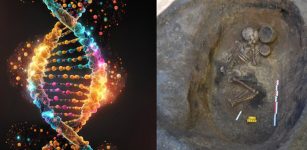 DNA From 3,800-Year-Old Individuals Sheds New Light On Bronze Age Families
Archaeology | Aug 29, 2023
DNA From 3,800-Year-Old Individuals Sheds New Light On Bronze Age Families
Archaeology | Aug 29, 2023 -
 Hot-Tempered Shield Maiden Freydis Eiriksdottir’s Unusual Adventures In Vinland And Greenland – Trouble Followed in Her Footsteps
Featured Stories | Apr 3, 2025
Hot-Tempered Shield Maiden Freydis Eiriksdottir’s Unusual Adventures In Vinland And Greenland – Trouble Followed in Her Footsteps
Featured Stories | Apr 3, 2025 -
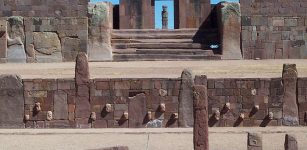 Superfood Of Ancient Andeans Reconstructed – What Helped To Fuel The Tiwanaku Civilization 2,500 Years?
Archaeology | Nov 30, 2021
Superfood Of Ancient Andeans Reconstructed – What Helped To Fuel The Tiwanaku Civilization 2,500 Years?
Archaeology | Nov 30, 2021 -
 Mada’in Saleh: Magnificent Timeless Rock-Cut Tombs And Monuments In The Desert
Civilizations | Oct 30, 2018
Mada’in Saleh: Magnificent Timeless Rock-Cut Tombs And Monuments In The Desert
Civilizations | Oct 30, 2018 -
 Riddle Of Two Undeciphered Elamite Scripts
Featured Stories | May 19, 2021
Riddle Of Two Undeciphered Elamite Scripts
Featured Stories | May 19, 2021 -
 The Inca Empire Was Powerful And Well-Organized – Why Were They So Successful?
Ancient History Facts | Sep 21, 2020
The Inca Empire Was Powerful And Well-Organized – Why Were They So Successful?
Ancient History Facts | Sep 21, 2020 -
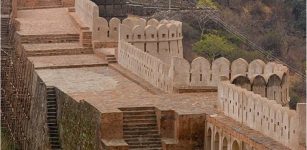 Magnificent And Massive Great Wall Of India – Astonishing Ancient Structure Shrouded In Secrecy
Civilizations | Jul 7, 2015
Magnificent And Massive Great Wall Of India – Astonishing Ancient Structure Shrouded In Secrecy
Civilizations | Jul 7, 2015 -
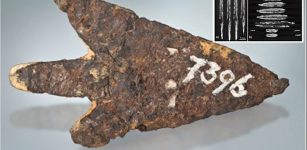 Arrowhead Made Of Meteoritic Iron From The Late Bronze Age Settlement Of Mörigen, Switzerland – Examined
Archaeology | Aug 1, 2023
Arrowhead Made Of Meteoritic Iron From The Late Bronze Age Settlement Of Mörigen, Switzerland – Examined
Archaeology | Aug 1, 2023



